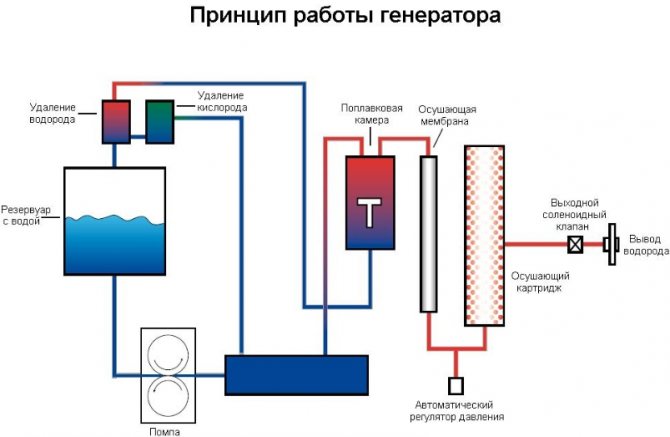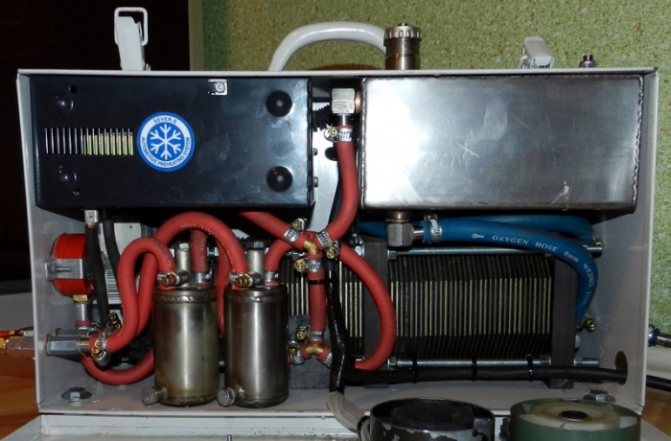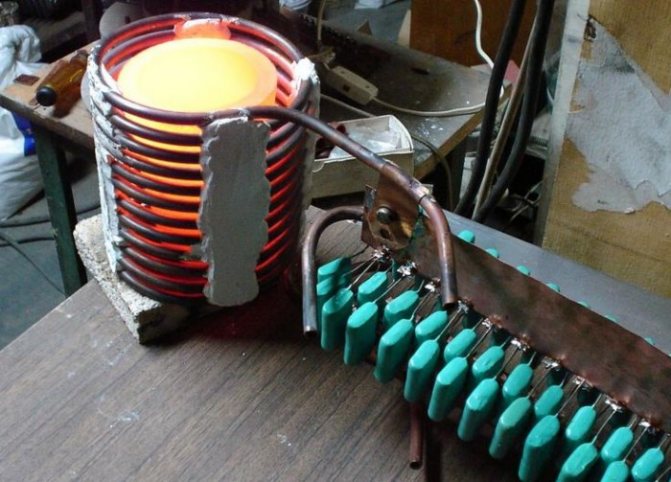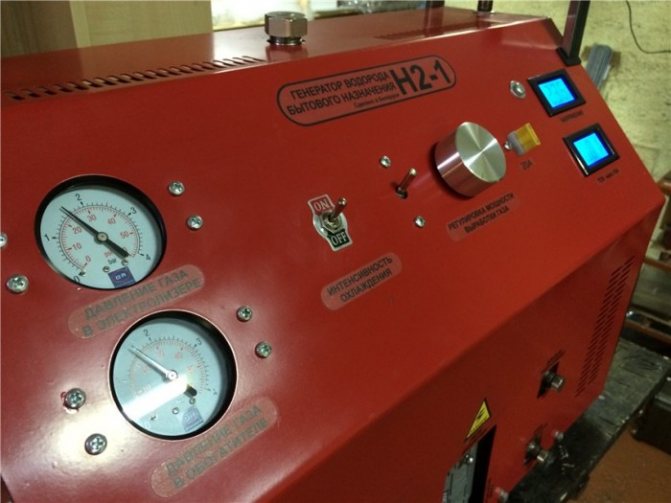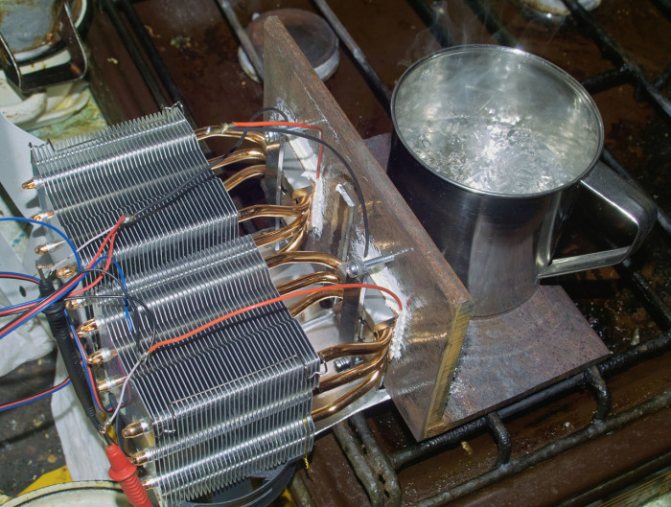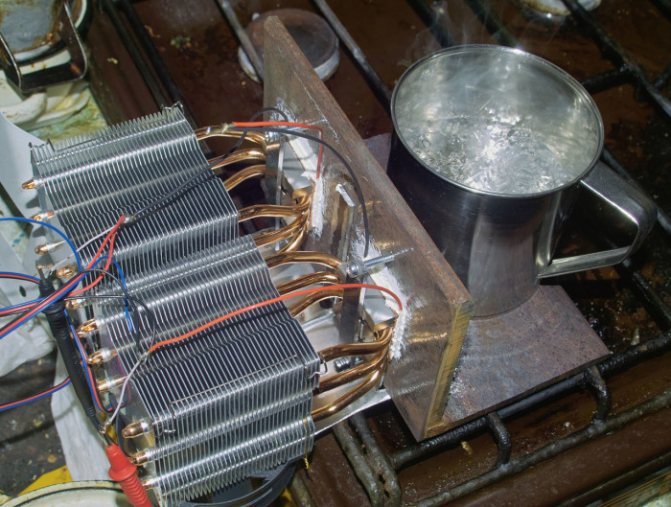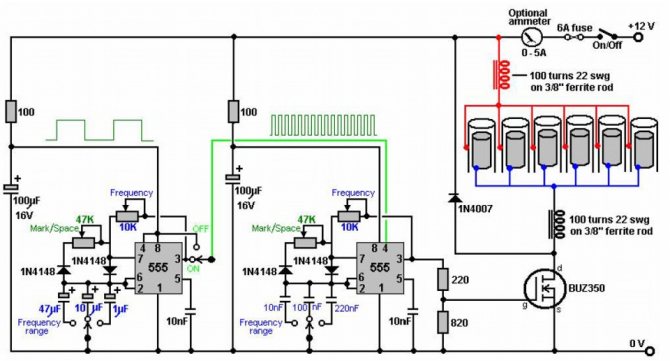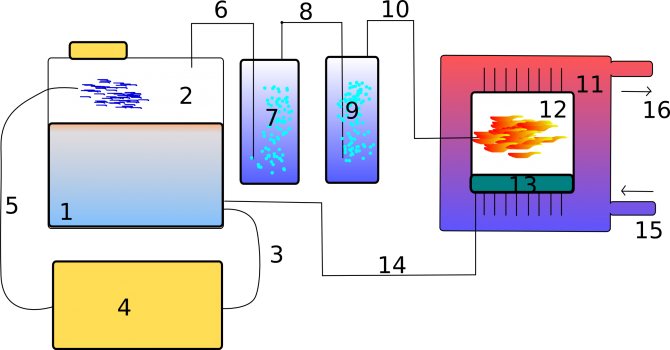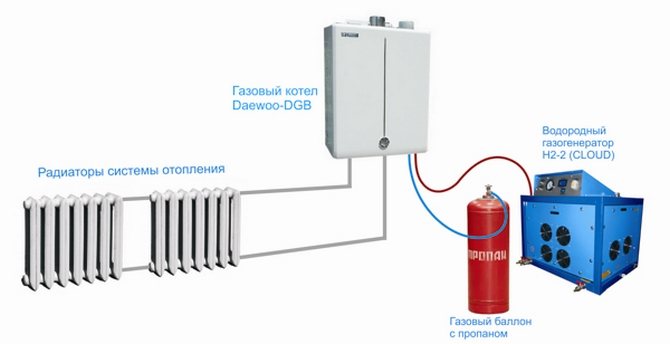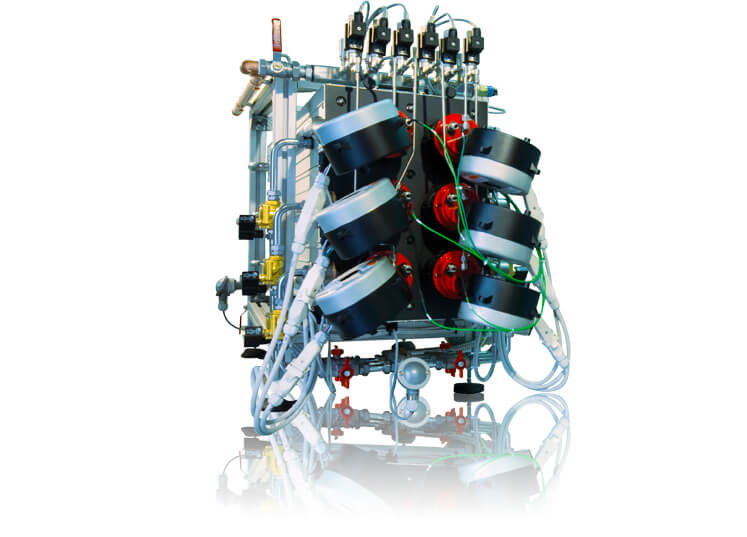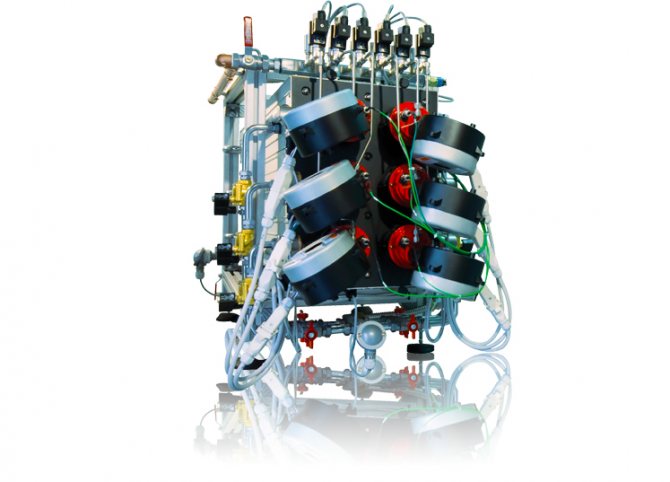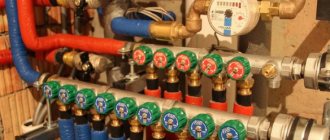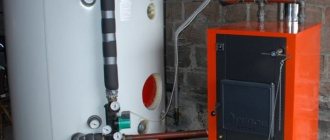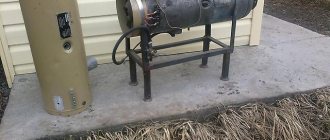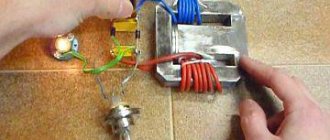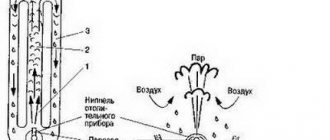Properties of water as fuel
Almost everyone knows the formula of water - H2O. It contains two hydrogen atoms (H2) and one oxygen (O2). They are interconnected by a covalent bond. Here it is worth recalling the essence of any fuel. These are substances capable of oxidation under the action of an oxidizing agent, which is oxygen.
An oxygen molecule (O2) can perform the function of an oxide in water. In this case, hydrogen (H2) becomes a kind of fuel. When it burns, it releases 3 times more energy than when using ordinary natural gas, and 2 times more than when burning gasoline. It was these properties that formed the basis for the idea of using water instead of fuel.
Manufacturers overview
There is no fundamental difference among hydrogen generators for heating. The only criterion on the basis of which you can differentiate them is the power indicator of devices made from different materials.
Hydrogen boiler STAR-3.0
As an example, consider the characteristics of two similar American-made boilers "HHO" and "Star 1000":
- In one hour, such a generator uses 1.5-3 kW.
- Water consumption - 5.5 liters in 24 hours.
- Generates from 1.2 to 2 liters of fuel per day.
- It can be used for heating air in buildings with an area of up to 250 "squares".
- The minimum service life is 15 years.
- The approximate cost in the domestic market is 3000-3500 USD.
| Model | Specifications |
| STAR 1000 and STAR 2000 |
|
| Hydrogen boiler STAR-1.1 |
|
| Chinese generator Kingkar 3000 |
|
Is there an eternal log
In reality, this is not a log, but an ordinary metal tank (pipe), welded on both sides. Above, along the entire length, holes are made in it for steam to escape. The pipe itself also has a hole that can be closed with a valve after the entire volume is filled with water.

You can use a cold one, but with a hot one it will heat up faster. How the device works:
- The tank is placed on the very bottom of the stove. To the left, to the right and from above, they cover it with ordinary logs. The stove is melted.
- When heated to a high temperature, water vapor begins to escape from the pipe.
- It goes to burning coals, mixing with air. The specific heat capacity of such a mixture is 2 times higher than that of ordinary air. Water vapor has a heat capacity of 2.14 kJ / kg K, and air has a heat capacity of 1 kJ / kg K.
The results of such an experiment, according to the statements of those who conducted it:
- Black soot leaves the smoke. This is due to the reaction of carbon particles with oxygen.
- The flame becomes more intense, with long tongues.
- Firewood burns longer: 1 hour 40 minutes. in comparison with 1 hour 10 minutes. when burning without an eternal log. Time increases by 40%.
The principle of operation of a hydrogen boiler
It is difficult to buy a hydrogen boiler for heating a private house: there is no serial production in Russia, and there is no mass production in the world either. The production of hydrogen heating systems was recently launched in Italy, so an individual order for the equipment can be made, but it will be very expensive.
The principle of operation of a hydrogen generator is as follows:
- The splitting of water with the formation of hydrogen occurs inside the electrolyzer after the electrolytic solution enters there.
- The products from the reaction are returned to a stainless steel (alloy) steel tank with an overpressure relief valve.
- Hydrogen passes through the protective block further into the combustion chamber, where, as a result of its reaction with oxygen, heat is generated.
- Heat enters the heating system through the heat exchanger. The temperature of 40 degrees is enough to heat the "warm floor".
- The water obtained as a result of the reaction is fed into a container with an electrolyte. Part of the solution is thus reused for ignition by recirculation.
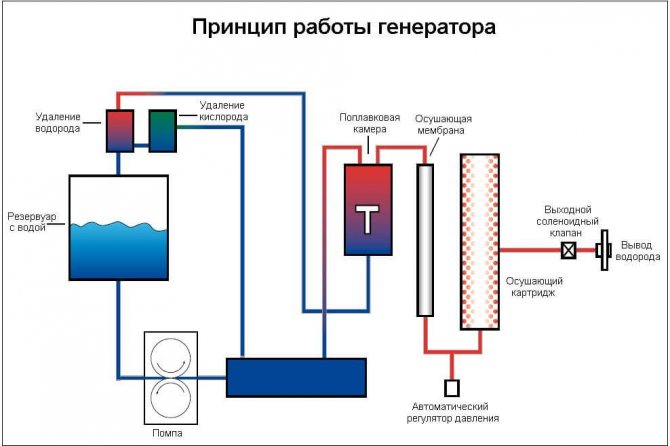

In the photo, the diagram and principle of operation of the hydrogen generator
Why are they still not drowned with water?
Intermolecular bonds of water arise and break much easier than intramolecular ones. Therefore, they decided to use them in heat transfer processes. Chemists have experimentally found that the energy of intermolecular bonds of water is in the range from 0.26 to 0.5 eV (electron volt).
The problem is that in order to obtain fuel from water, it must be decomposed into components. In simple words, it needs to be decomposed into oxygen and hydrogen, then hydrogen is burned and water is obtained again. Splitting is achieved by passing an electric current through the liquid.
When boiling, water does not break into separate molecules, but only evaporates. Heating from normal combustion does not cause any other reaction in the liquid. Moreover, this process requires a lot of energy that could be used with benefit. For instance:
- burning 1 kg of dry wood with a moisture content of no more than 20% gives about 3.9 kW;
- if the moisture level of the wood rises to 50%, then only 2.2 kW is released from 1 kg.
The decomposition of water to obtain real combustion requires a significant expenditure of energy. It needs much more than it will be released when using the recovered elements again as fuel. An approximate ratio can be given:
- 100% of energy - for splitting;
- 75% of the energy comes from the combustion of the recovered components.
It is precisely the fact that less energy is released during the reverse reaction of the released hydrogen and oxygen, and is the reason why water as a fuel for cars and not only is still not used. Economically, this method turned out to be unprofitable. It is more realistic to make fuel from garbage. It can be liquid, gaseous and solid.
Is there a "water" vehicle
In 2008, in Japan, the "water" car was presented by Genepax at an exhibition in Osaka. A glass of tap or river water, or even regular soda, could be used as fuel.


The device split the liquid into hydrogen and oxygen molecules, which began to burn and give the car energy to drive. As of today, it is known that the Genepax company went bankrupt and closed a year later.
How to assemble a hydrogen boiler with your own hands
The feasibility of making a hydrogen heating boiler with your own hands should be carefully ascertained and a final decision should be made in each individual case, determining the following:
- The economic efficiency of the production of the installation. The main resource in the production of hydrogen is electricity. The cost of generating heat using hydrogen must be economically justified.
- The technical level of equipment assembly must be high. The evolution of hydrogen must take place in a specially designated container, gas leakage from which can lead to an explosion.
In principle, a hydrogen generator for heating a private house consists of:
- heat exchanger;
- electrolyzer;
- combustion chambers;
- two-stage safety block;
- tanks with electrolyte for hydrogen from alloyed or stainless steel.
Crafting materials are sold at retail. To assemble the installation you will need:
- 12 volt power supply;
- PWM regulator for 30 amperes;
- stainless steel tubes of different diameters;
- stainless steel container.
The assembly of a hydrogen generator for heating a house should be started only after studying the process of gas formation. This is necessary to ensure correct setup and efficient operation of the equipment.
For detailed instructions on assembling a hydrogen boiler, see the video below.
Adding water to regular fuel
Water as fuel for your car can be used in conventional diesel fuel. This is another hypothesis that was put forward by "home" inventors. It turned out that when a small amount of diesel fuel was added to a bottle of water, the resulting mixture burns. Moreover, less soot is released, and the combustion process becomes more violent.
Also, in the process of burning a piece of paper that was dipped into the resulting mixture, a crack appears, but it only indicates the evaporation of the liquid. In addition, shaking does not dissolve diesel fuel in water. A homogeneous mixture will not work here. Over time, diesel fuel, like oil or gasoline, collects on the surface.


A similar experiment was carried out with a tractor, which was filled with diesel fuel and water, mixed in certain proportions. The unit started up and began to rumble, standing still. But only for this is the energy of such a fuel sufficient. And there is a high risk that the engine will fail.
Advantages and disadvantages


One of the advantages is the absence of toxic substances during fuel combustion
Like any heating equipment, a hydrogen boiler has its pros and cons.
Advantages of devices:
- absence of toxic emissions during fuel combustion;
- almost free fuel - clean water has a symbolic value;
- high efficiency, reaching 0.96;
- saving minerals through the use of renewable energy sources;
- low cost - hydrogen heating at home consumes a small amount of electricity, which can be obtained from solar panels, a battery or a generator, in the absence of an industrial network.
Has home heating with hydrogen and its disadvantages:
- high cost of equipment;
- the need for regular maintenance and replacement of consumables (electrodes, communications);
- dependence on constant replenishment of the catalyst;
- shortage of hydrogen cylinders for direct connection devices;
- a small selection of boilers in the retail network;
- difficulty in finding qualified specialists for installation and maintenance of equipment.
The technology in this industry is rapidly evolving. Hydrogen heating is getting better, more economical and safer. You can also heat a house with pure hydrogen, since it is much more economical than propane.
How to heat a house for free with water - is it possible to make heating on water
Water is composed of hydrogen and oxygen, H2O. Hydrogen H2 is a volatile detonating gas that, when burned, releases 2 times more energy than ordinary natural gas (heavy hydrocarbon) found in pipelines and gas stoves. Colossal heat of combustion! Oxygen O2 is a natural oxidizing agent, anything burns with it, for example, firewood, as a result we get carbon dioxide CO2 ...
In general, the idea is not new - to split water into 2H2 and O2 and get components for a very, very calorific fuel, which burns better (releases more energy) than anything that was burned in heating houses earlier. Hence the tempting process - how to create a boiler in a house on water, or an engine running for free ...
The main way out of the technical complexity, which is offered by inventors of all stripes, is to mix water into ordinary fuel, or it is extremely difficult in mixing pressure chambers, if it is extremely simple - by blabbing it in a bottle ...
Let's take a look at the latest achievements.It is especially interesting for homeowners - mixing 4% waste oil and 96% water - is not “free at all”, because mining can be drained from a personal car. This is what the central TV channels broadcast ...
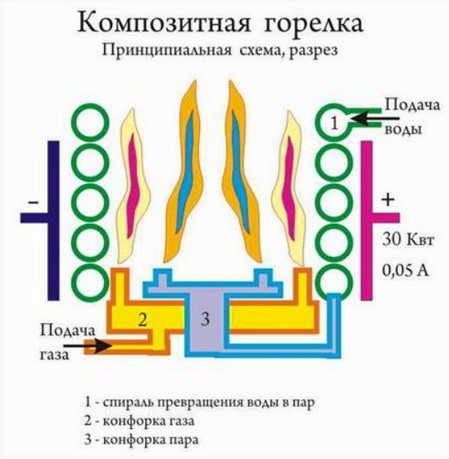

Conventional stove using water as fuel
Water can be used as fuel in an ordinary stove or in an ordinary solid fuel boiler, which are already installed everywhere - as some video creators say. The original idea is to feed water vapor directly into the plasma of burning fuel, or wood or coal ... And no complicated equipment is needed for this.
A metal tank with many small holes on the upper edge is placed in the firebox, through which steam will escape when water boils. There is also a filler neck with a screw cap. When boiling, steam will go directly to the hottest zone.
According to eyewitnesses, using an eternal log (as the tank is called), black soot disappears (oxygen burns out carbon?), Long tongues of flame appear (hydrogen burns out?). In general, at least - a field for experiments. But not only a conventional furnace can be upgraded (?) In this way, but also a conventional engine - read on ...
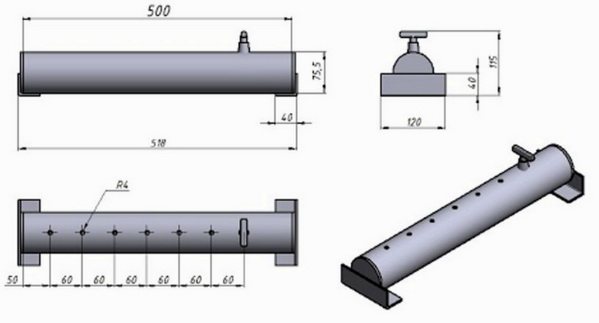

What do the central TV channels say about heating houses with water?
There is a design much more complicated than a water tank in a firebox, but the inventor got everyone's attention. How to heat a house with water and mining is a somewhat complex unit ...
But maybe you need to invest as much as possible in equipment in order to heat for a penny? - in the opinion of these authors. A mixture of water (90%) and working off (10%) in "boiling" with "turbulence" does its job - the flame, let's face it, is wonderful, the main thing is from nowhere ...
How can you ride the water for free
There are many video evidences when a mixture of water and diesel fuel burns. It mixes in a simple bottle, ignites - burns! Some cracking appears, but there is combustion, while the fuel itself simply became more - by the volume of added water. If you pour this miracle into a diesel truck, then the truck ...
The author of the next video does everything in a slightly more modest size. For experiments using water as fuel for the engine, a mokik is used - a moped. But big grows out of small, doesn't it? Today is a mokik, tomorrow - "Zhiguli", the day after tomorrow -….
Can I heat with water? - How deceived
But if you look at the world around us, you will find that water as fuel is not used anywhere nearby - only in the above videos, and in many other filming, and in the statements of pseudo-inventors. More often this is done with the aim of "somehow earning money".
What is really going on?
- Water mixed with diesel fuel burns with a bang - diesel fuel burns, water droplets boil and create micro-explosions, the energy release is reduced several times.
- Diesel on diesel fuel with water rumbles - the truck will not be able to do normal work - there is little energy, and the unit itself quickly fails.
- Tank in the stove - the evaporation of water from heating takes a lot of energy from the fuel, binds the soot into resinous deposits, cools the stove, creating an effect as if they are burning with raw wood.
- A mysterious super-unit based on a mixture of waste oil and water - just an entertaining video, there would be something to talk about….


How water actually burns
For the splitting of water into H2 and O2, 30% more energy is consumed than is released during the reverse connection of these components, i.e. when burning hydrogen. Therefore, until now, nothing works on water, and water is not heated anywhere. As an experiment, a long time ago, a car was created with an electrolysis plant on board, which split water using huge batteries, and hydrogen was burned in an internal combustion engine. The car was moving! On clear water! But he consumed energy for movement many times more than if it was just gasoline ...
In a flame, water does not split, but simply evaporates, taking a huge amount of energy for its transformation from a liquid state into a gaseous state. Therefore, at the official level, water is a fire extinguishing agent.
Factory and homemade installations
- profitable - the selection of materials is made at your choice;
- convenient - you can save on minor elements;
- simple - no need to resort to the help of specialists;
- reliable - you yourself are responsible for the quality, which gives you the right to choose such materials that would satisfy all your needs.
Some users complain that Chinese units, which are more affordable in price, break down after the heating season. Moreover, their repair in most cases requires large investments. At the same time, a self-made installation guarantees that its productivity will be at the highest level, and any breakdowns will be eliminated as easily and quickly as the system itself was assembled.
Which water is better - plain or distilled
One of the questions that owners of hydrogen boilers often ask is about the water used to operate the devices.
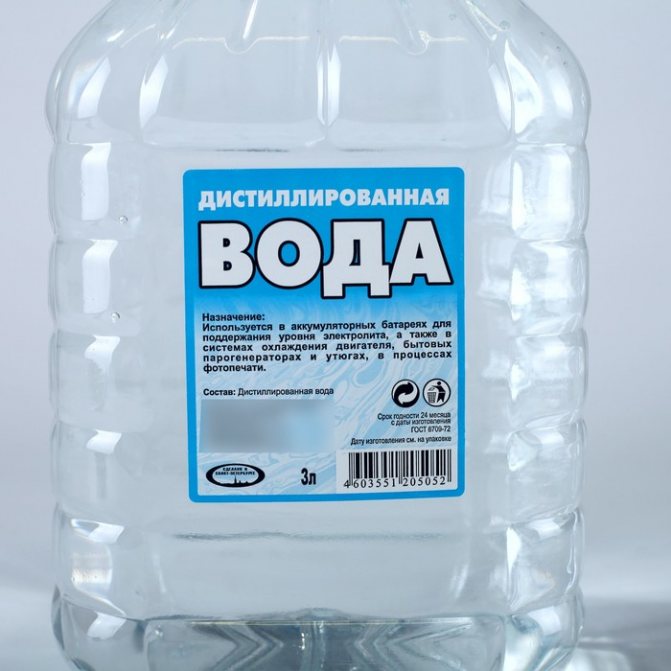

Distilled water for the operation of a hydrogen boiler can be purchased in stores or you can start its production yourself using the simplest installation
According to experts, factory or home-made devices demonstrate the best performance when working on distilled water, to which very little sodium hydroxide is added (for 10 liters of H2O - one tablespoon).
However, a hydrogen boiler can successfully operate on tap water, the main thing is that it does not contain heavy metal salts.
Components of a hydrogen plant
The design of a hydrogen heating system is quite simple.
Boileracting as a heat exchanger, it is the main element where hydrogen production takes place.
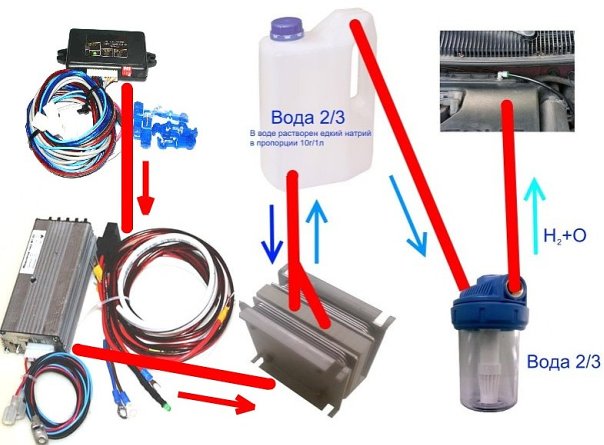

A boiler operating on hydrogen can be assembled from available elements, and only ordinary or distilled water is required for its operation (+)
Eletrolyzer - the main active part of the boiler, where an electrolytic reaction takes place, leading to the decomposition of water into H2 and O2. The element is a reservoir filled with water, in which metal electrodes with maximum current conductivity are placed.
Wires are connected to the plates, through which electricity is supplied.
Burner - a device that helps to heat the coolant in the heating system. Located in the combustion chamber, a spark is supplied to ignite it.
Burner valve - a special part located at the top of the device. Thanks to this part, the H2, which has risen to the top, easily overcomes the barrier inaccessible to other emitted substances and enters directly into the burner.
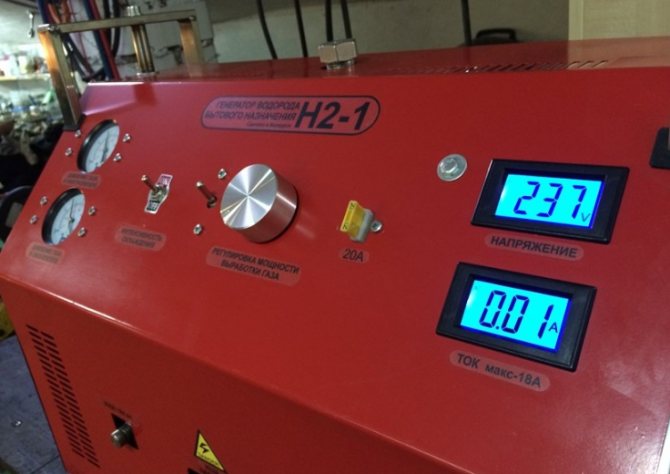

In factory hydrogen boilers, a control unit is provided. The panel displays voltage and current indicators, power regulator and levers for setting other operating parameters
Pipeline - communications that leave the unit and are used to supply heat to all rooms of the house. For piping, heating pipes with a diameter of 25-32 mm are used. When laying, a fundamental rule is observed: the diameter of each subsequent branch should be smaller than that of the previous one.
Top 5 factory hydrogen generators
The first company to manufacture and patented the technology for manufacturing a hydrogen fuel boiler was an Italian company Giacomini... It specializes in devices based on ecological methods of generating energy: geothermal pumps, solar panels and others.


H2ydroGEM is a catalytic combustion chamber, in each horn of which there is a substance that accelerates the reaction of hydrogen combustion. Due to this, the process takes place at a relatively low temperature.
Currently, such models are manufactured by American, Chinese, European companies, but their range is not too wide compared to boilers operating on other types of fuel.
Best Factory Models of Hydrogen Systems
Among the most popular models, we note:
- MegaTank100 - a generator powered by electricity from the mains. It has a reliable multi-level protection system against overheating and short circuit, which guarantees safe and productive work. The cost of the model depends on its configuration.
- STAR-2000 - an expensive unit (> 200,000 rubles) has excellent technical characteristics. Despite the fact that this generator consumes a minimum of energy, it is capable of heating a room with an area of 251-300 square meters.
- Kingkar - a mains powered device with excellent working properties. The cost of the model is quite high - about 100 thousand rubles, but it is compensated by economical energy consumption.
- H2-2 - Italian equipment of the "extra" class at a high price (about 250,000 rubles). allowing to heat air in large spaces (from 300 m3 and more) with minimal electricity consumption.
- Free Energy - high-quality devices at an affordable cost in the range of 15-35 thousand rubles (the price depends on the power and other characteristics). Equipped with a control unit that automates many processes, a multilevel voltage and pressure regulation sensor.
There are also other models in different price ranges.
